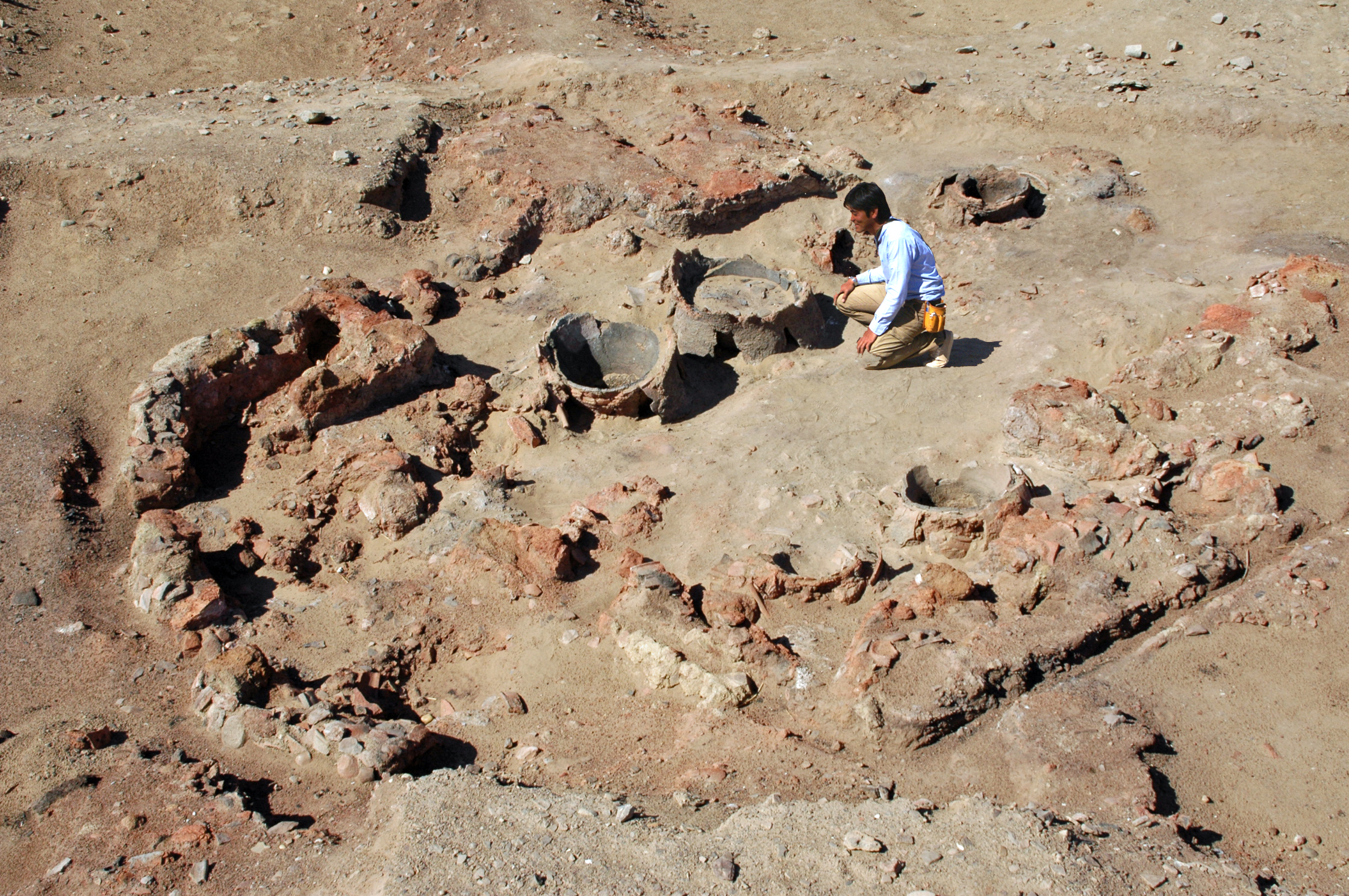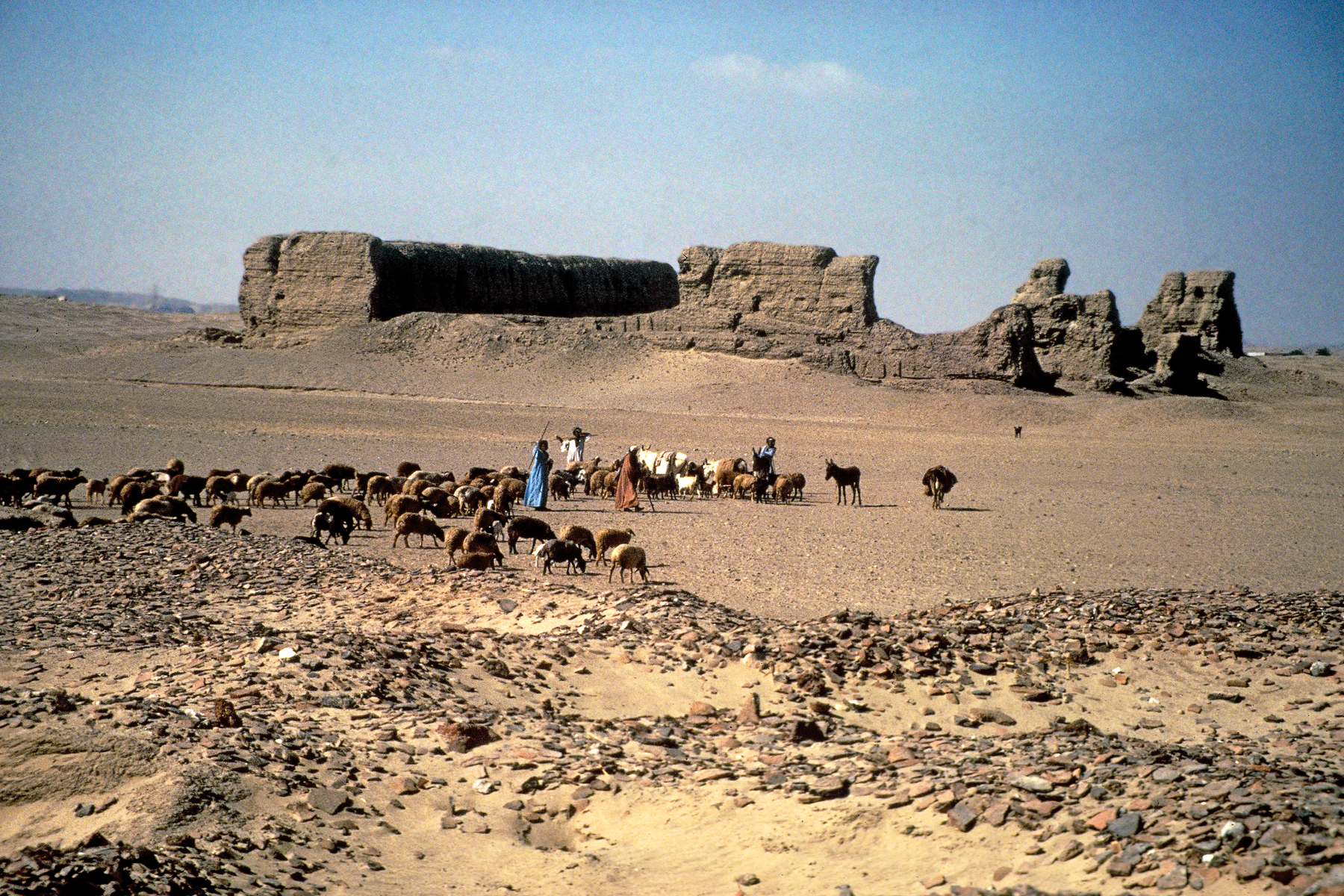- EraPredynastic Period
- Project DirectorDr. Renee Friedman
- LocationEdfu
- AffiliationAshmolean Museum
- Project SponsorThe Friends of Nekhen & Americans for Oxford
- Project Dates1996-Present
Hierakonpolis (ancient Nekhen and modern Kom el Ahmar) is well-known as a major site for the study of Egypt’s predynastic and early dynastic periods, but this vast, multi-component site contains this and much more. It has long been famous as the find-spot of the palette of King Narmer, a potent icon for the birth of Egyptian civilization at c. 3100BC, indicating the site’s exalted status at this time. However, on-going activities of the Hierakonpolis Expedition in the low desert are now extending back its significance by some 500 years, while exploration and conservation of its dynastic period features are contributing to greater knowledge of several aspects of Egyptian and Nubian culture ranging from monumental architecture to tattoos.
Building on the work of Walter Fairservis and Michael A. Hoffman, the expedition, under the direction of Renee Friedman and Barbara Adams (deceased 2002) resumed excavations in 1996. Annual field seasons since that time have fundamentally enriched our view of the formative Predynastic age. Discoveries include Egypt’s earliest large scale breweries and food processing installations; a large ceremonial center, providing unique insights into predynastic cult practices; and a cemetery of the non-elite members of the population, revealing evidence for early mummification. Meanwhile, explorations in the elite predynastic cemetery continue to uncover tombs of the local rulers, who expressed their power not only in the elaborate architecture and contents of their sizable graves, but also with the people and intriguing array of animals they took with them to the afterlife. Wild and exotic animals such as elephants, aurochsen, a leopard and troops of baboons attest to a veritable royal menagerie, while fine artifacts, such as ceramic masks, exquisite flint figurines, carved ivories, and a near life sized ceramic statue of a hippopotamus, all attest to the wealth and creativity of the inhabitants.
Predynastic brewery with excavator, Masahiro Baba. Photo: Renee Friedman, Courtesy of the Hierakonpolis Expedition.
The Enclosure of Khasekhemwy , the oldest freestanding mud brick structure in the world. Photo: Renee Friedman, Courtesy of the Hierakonpolis Expedition.
Areas of active interest dating from the Dynastic age include the massive mudbrick ceremonial enclosure (aka The Fort) built for King Khasekhemwy in the Second Dynasty. Dominating the site, it is the oldest freestanding mudbrick building in the world still preserved in places to its original height of 10m. In 2004-2009, a grant from the World Monuments Fund®, with additional and generous donations from the Friends of Nekhen, made it possible to undertake the stabilization and repair of the most critically threatened portions of the structure to ensure its long-term survival. Maintenance of the imposing monument is a big job and still on-going.
Thanks to an ARCE-EAP grant in 1998-2001, we were also able to conserve and record the decorated rock cut tombs of Itjefy/Ny-ankh-Pepy (late Old Kingdom and early Middle Kingdom), Horemkhawef (late Middle Kingdom), Djehuty (early 18th Dynasty, reign Thutmose I) and Hormose (20th Dynasty, reign Ramses XI). Dating to times rarely documented at other sites such as Thebes, these tombs have offered insights into regional artistry, development of cult, and personal interaction with the gods.
Another unique feature that the expedition has explored is the Nubian C-Group cemetery, the northernmost physical evidence of this distinctive culture in Egypt. Perhaps the last surviving cemetery of its type, good organic preservation has allowed us to gather previously unrecorded information about the physical anthropology of these people, their elaborate leatherwork and their tattoos, as well as how they negotiated life (and death) in a foreign land during the early Middle Kingdom. Two cemeteries of the Pan Grave culture are also present. Recent investigations indicate they are amongst the earliest evidence for this enigmatic people in Egypt and are shedding light on a different immigrant experience.
In addition, rock art from various periods of Egyptian history, now surveyed and documented, are also a feature of this extensive and always intriguing desert site.
Results of each season of exploration and research are reported annually in the newsletter of the Hierakonpolis Expedition, the Nekhen News, available to our Friends of Nekhen, with back issues available online on the Hierakonpolis website.
Since 2015, the Hierakonpolis Expedition has been affiliated with the Ashmolean Museum.Founded in 1683, the Ashmolean is the world’s oldest public museum and home to the University of Oxford’s collection of art and archaeology. The Department of Antiquities’ collections from ancient Egypt and Sudan are among the most extensive in Britain, with particular strengths in the Predynastic and Early Dynastic periods (including significant holdings from Hierakonpolis), the Amarna Period, as well as over 8,000 ostraca.
Reviving the University of Oxford’s tradition of involvement in archaeological fieldwork in Egypt, the collaboration with the Hierakonpolis Expedition presents exciting opportunities to illuminate the museum’s collections and contextualise objects that have been in Oxford for over a century. The excavations also have a significant impact on the study and teaching of Egyptology at the University. For the first time in several generations, students will be trained in archaeological fieldwork techniques, enhancing and enriching their degree programme and extending their skills base for the future.
Credits:
Co-Director: Liam McNamara. Lisa and Bernard Selz Curator for Ancient Egypt and Sudan, Ashmolean Museum of Art and Archaeology, University of Oxford, UK.
Team members:
- Xavier Droux- Field director of excavations at HK6
- Masahiro Baba- Field director of excavations at HK11C
- Anna Pieri- Physical anthropologist
- Wim Van Neer- Archaeo-zoologist
- James Rossiter- Photographer
- Joel Paulson- Cartographer
- Jane Smythe- Illustrator
- Lamia El-Hadidy- Conservator
- Grazia Di Pietro- Ceramicist
- Aaron De Souza- Field director excavations at HK47A
- Daniel Antoine- Bioarchaeologist

